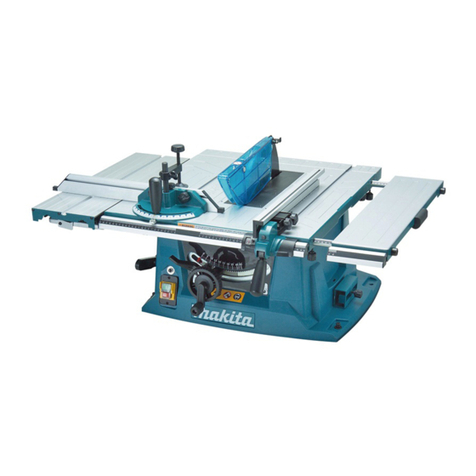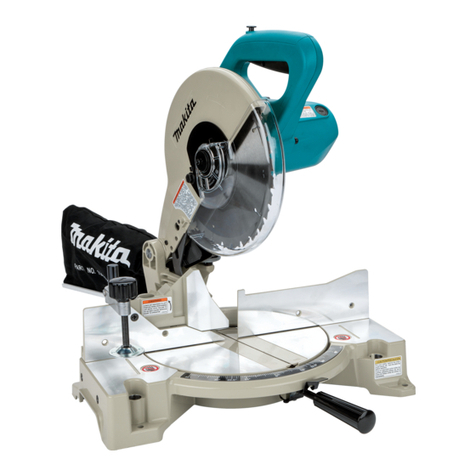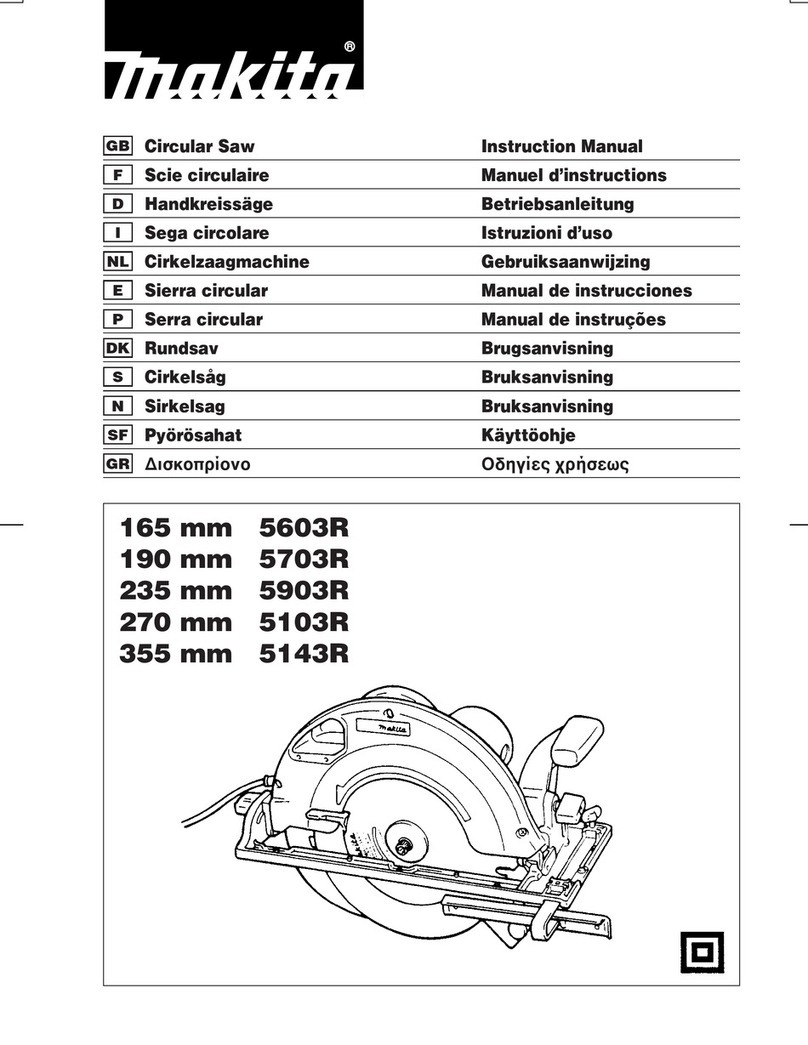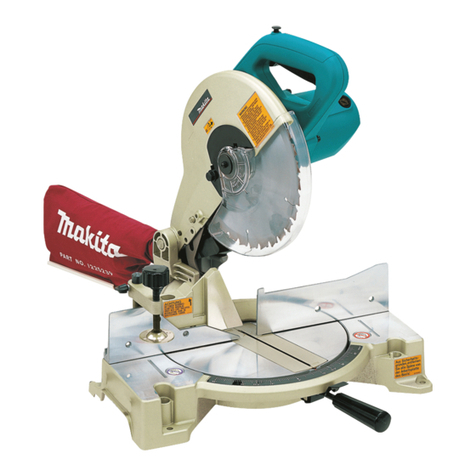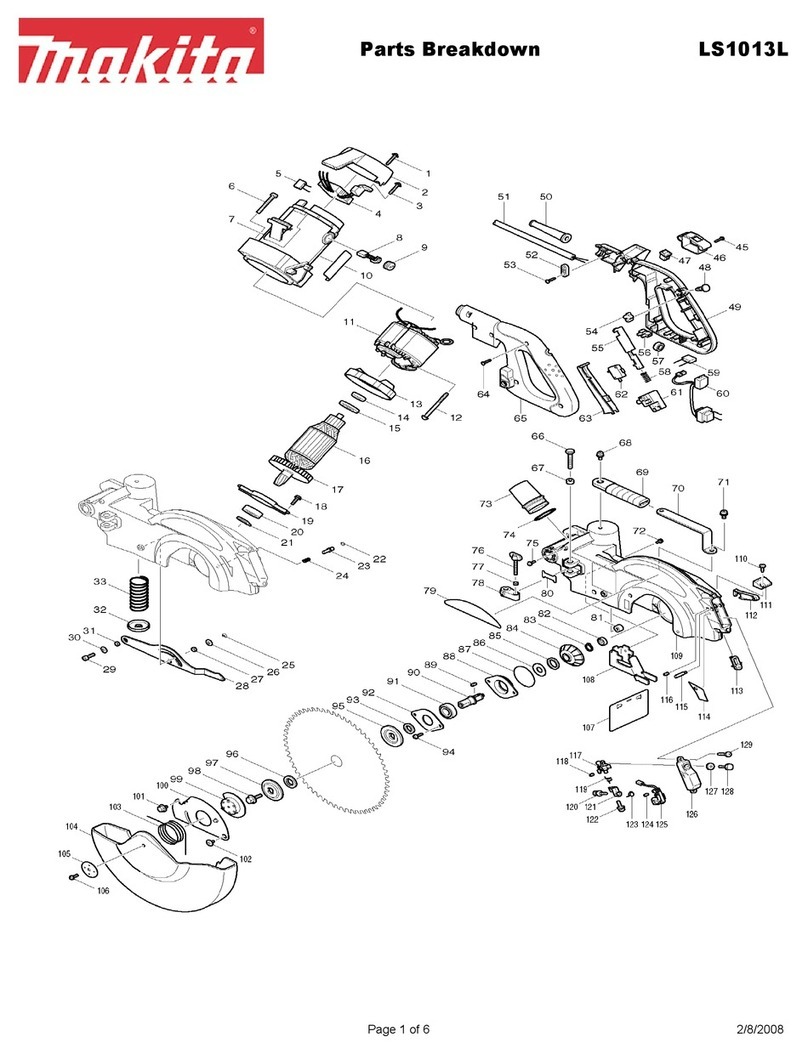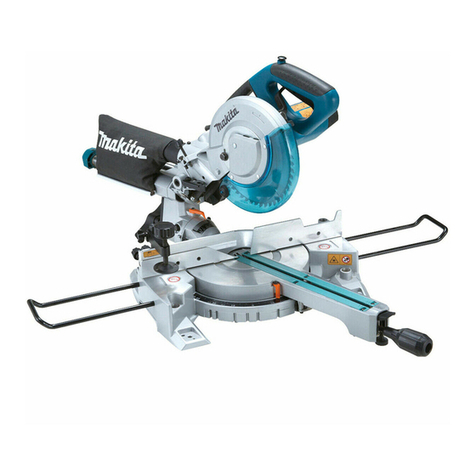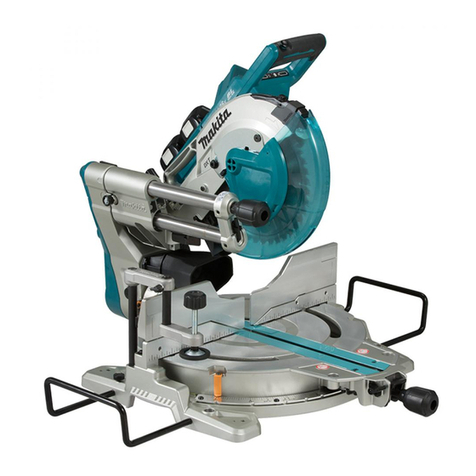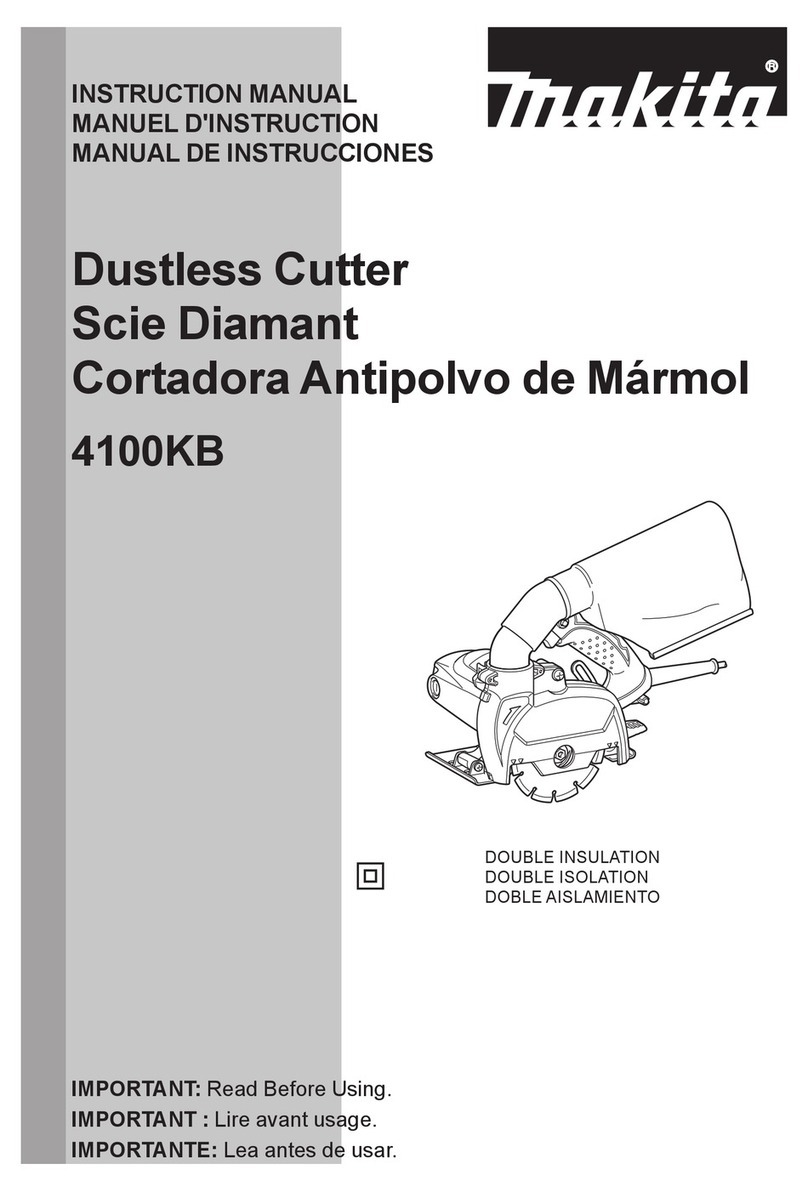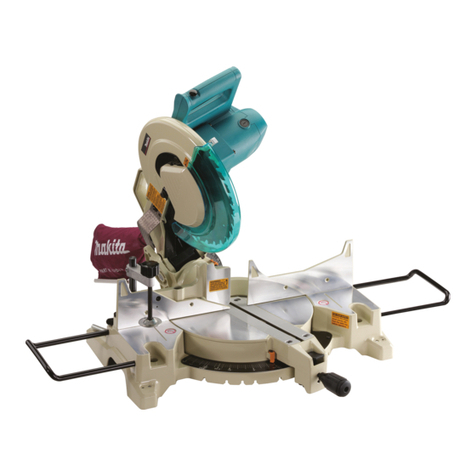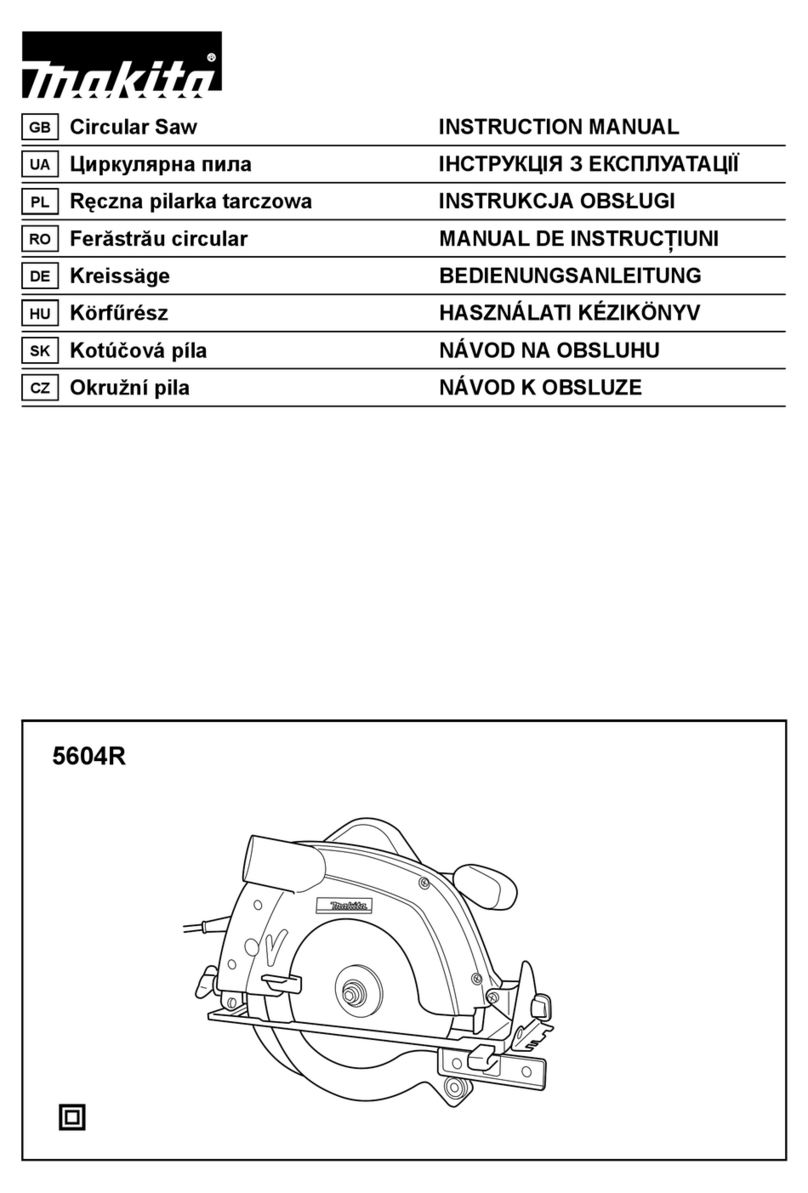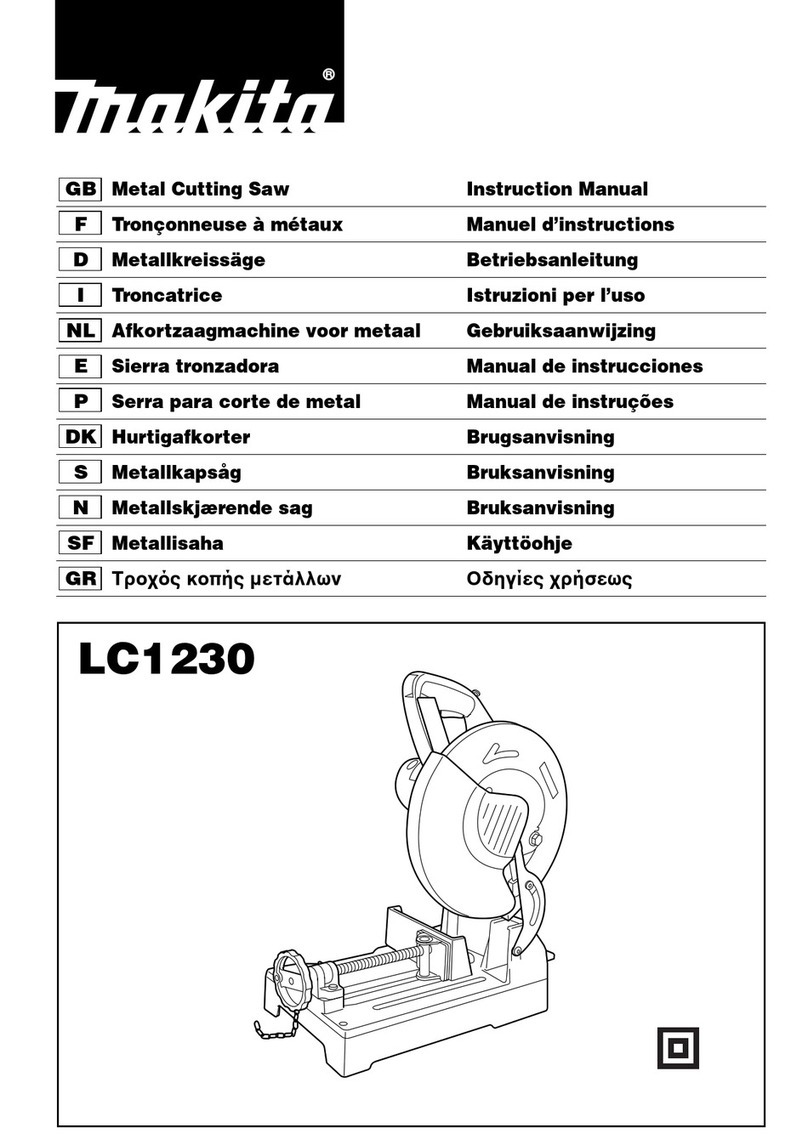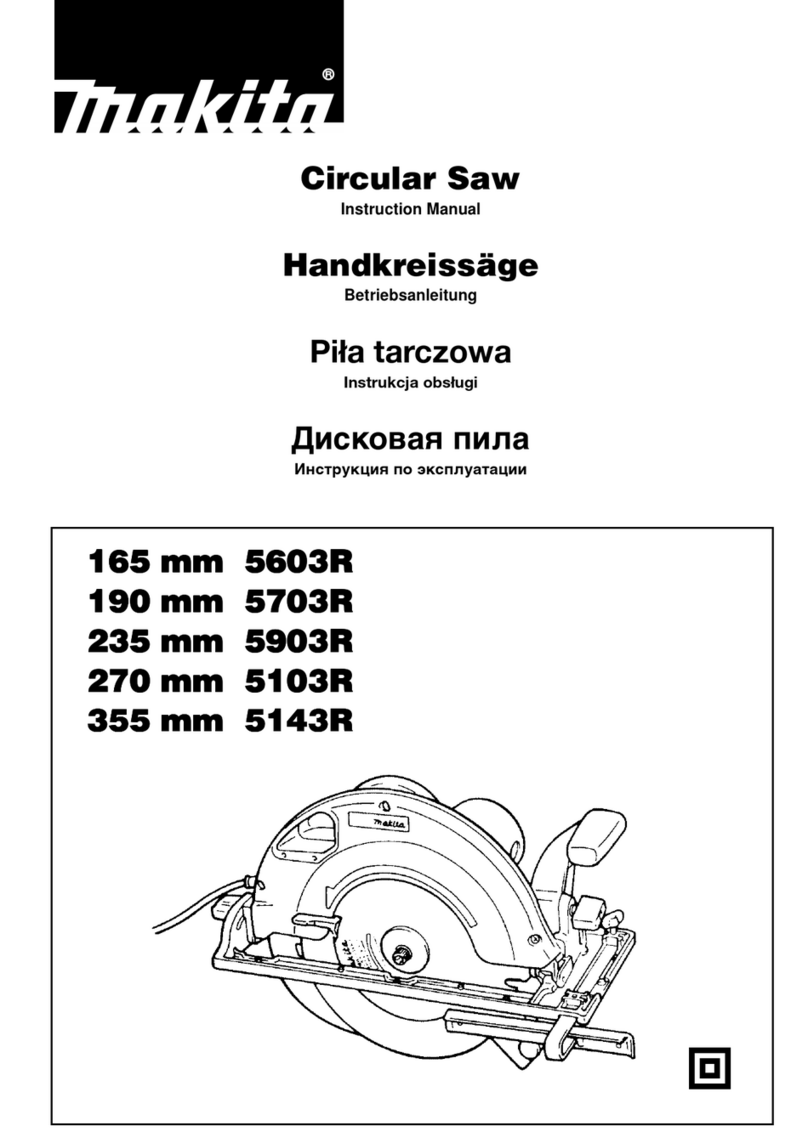
10 ENGLISH
ENGLISH (Original instructions)
SPECIFICATIONS
Model DLS713
Blade diameter 190 mm
Hole (arbor) diameter (country specic) 20 mm or 15.88 mm
Max. kerf thickness of the saw blade 2.2 mm
Max. Miter angle Left 47° , Right 57°
Max. Bevel angle Left 45°, Right 5°
No load speed 2200 min-1
Dimensions (L x W x H) 655 mm x 430 mm x 454 mm
Net weight 12.2 - 14.3 kg
Rated voltage D.C. 18 V
• Due to our continuing program of research and development, the specications herein are subject to change
without notice.
• Specications may differ from country to country.
• The weight may differ depending on the attachment(s), including the battery cartridge. The lightest and heavi-
est combination, according to EPTA-Procedure 01/2014, are shown in the table.
Applicable battery cartridge and charger
Battery cartridge BL1815N / BL1820 / BL1820B / BL1830 / BL1830B / BL1840 /
BL1840B / BL1850 / BL1850B / BL1860B
Charger DC18RC / DC18RD / DC18RE / DC18SD / DC18SE / DC18SF
• Some of the battery cartridges and chargers listed above may not be available depending on your region of
residence.
WARNING: Only use the battery cartridges and chargers listed above. Use of any other battery cartridges
and chargers may cause injury and/or re.
Max. Cutting capacities (H x W) with blade 190 mm in diameter.
Miter angle Bevel angle
45° (left) 0° 5° (right)
0° 25 mm x 300 mm 52 mm x 300 mm 40 mm x 300 mm
----- * 60 mm x 265 mm
(Note 1)
-----
45° (left and right) 25 mm x 212 mm 52 mm x 212 mm -----
----- * 60 mm x 185 mm
(Note 2)
-----
57° (right) ----- 52 mm x 163 mm -----
----- * 60 mm x 145 mm
(Note 3)
-----
(Note)
* mark indicates that a wood facing with the following thickness is used.
1: When using a wood facing 20 mm thickness
2: When using a wood facing 15 mm thickness
3: When using a wood facing 10 mm thickness
